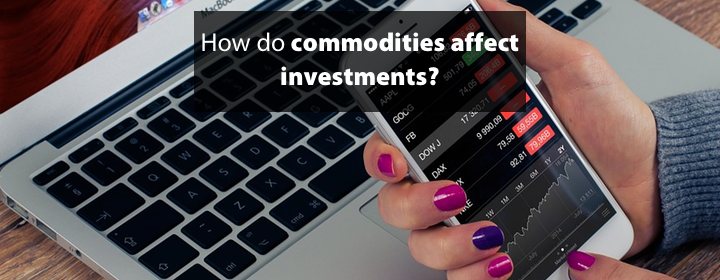An article published on Maya on Money about the 10 key themes investors must not ignore in 2017 inspired thought about a word that gets used a lot in the world of investments — commodities.
The key takeaway from this should be that commodities traditionally move in opposition to stocks, so they can be a good way to diversify an investment portfolio — either for the long-term, or during unusually volatile periods.
Let’s take this opportunity to review what a commodity is and how they affect investments.
What is a commodity?
A commodity is a marketable good or service that is produced to meet a demand. A commodity is essentially uniform across producers, and this uniformity is referred to as ‘fungibility’. For example, oil would be considered a commodity, but Levi’s jeans would not be, as consumers would consider them to be different from jeans sold by other companies. When traded on an exchange, a commodity must meet specific standards, which is known as a basis grade.
A commodity market is a virtual or physical marketplace that is dedicated to the buying, selling and trading of raw or primary products. There are currently about 50 major commodity markets in the world that facilitate trade in approximately 100 primary commodities.
Types of commodities
Traditional commodities fall into two main categories — hard and soft commodities.
The term ‘hard commodities’ tends to refer to natural resources, such as metals (eg. gold, silver and copper) and energy (eg. crude oil and natural gas). While ‘soft commodities’ comprises of livestock (eg. cattle and sheep) and agricultural products (eg. wheat, rice, sugar and cotton).
Over the past few years, however, the definition of ‘commodities’ has expanded to also include financial products, such as foreign currencies and indexes. Technological advances have also led to new types of commodities, such as mobile phone minutes and bandwidth, being exchanged.
Why are commodities of interest to investors?
Commodities can have a big effect on investment portfolios, which is why “continued support for commodities” was listed in the article on Maya on Money as a trend not to be ignored. The article highlighted that commodities “have been trending higher for a year now. The demand side has been strong, which has been driven by China over the past three quarters. A supply contraction and potential consolidation, which is not yet materialised, will be incremental key drivers.”
Basic economic principles of supply and demand tend to drive commodities markets, so lower supply increases demand, which equals higher prices (and vice versa). For example, a major disruption, such as a health scare among cattle, might lead to a spike in the generally stable demand for livestock.
Slumping commodity prices can also provide opportunities for investors. However, investing in commodities can easily become risky because they can be affected by eventualities that are difficult to predict, such as weather patterns, epidemics, natural disasters, and even politics. Donald Trump’s proposed policies, for example, have kept commodity traders and producers on high alert recently. As a result, it is important to carefully consider your risk appetite and the length of time you have until you wish to achieve your goals, as this will affect the recommended allocation of your portfolio to commodities.
As with all parts of your portfolio, it is important to ensure you have a solid understanding of what you have allocated and why. Don’t hesitate to arrange a meeting to discuss commodities further, and don’t be afraid to ask questions if you’re ever unsure of any terminology.

